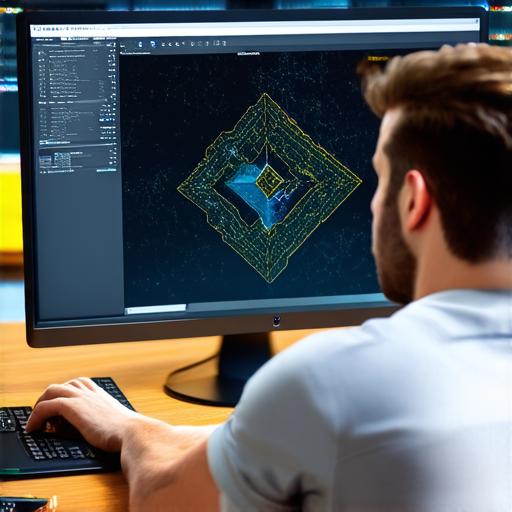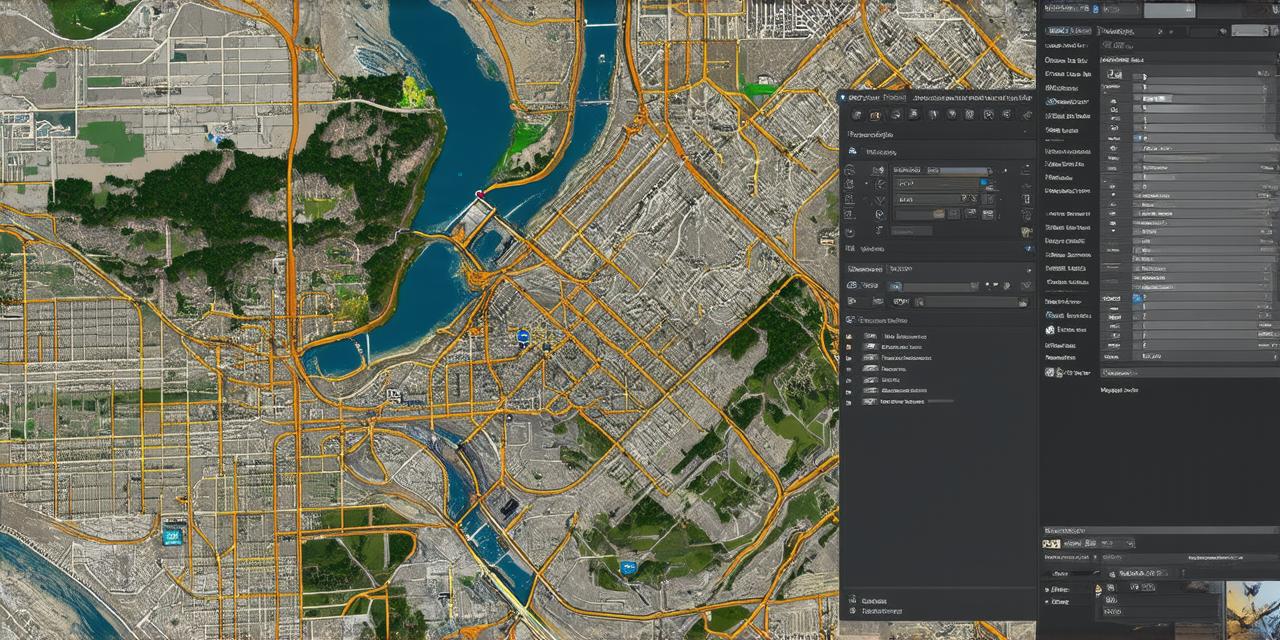Introduction:
Creating 3D maps is a crucial part of game development, especially when it comes to open-world games. In this guide, we will explore how to create 3D maps for Unity, one of the most popular game engines on the market. We’ll cover everything from the basics of map creation to advanced techniques and best practices.
The Importance of 3D Maps in Game Development:
Before diving into the process of creating 3D maps for Unity, let’s first understand why they are so important. 3D maps provide a sense of immersion and realism that can greatly enhance player engagement and enjoyment. They also allow developers to create complex environments with multiple levels and pathways, which can add depth and replayability to the game.
Getting Started with Unity:
Before we dive into the process of creating 3D maps for Unity, let’s first make sure you have a basic understanding of the game engine. Unity is a cross-platform game engine that supports 2D and 3D graphics, as well as virtual reality and augmented reality development. It is easy to use and has a large community of developers who provide support and resources.
Creating the Terrain:
The next step in creating 3D maps for Unity is to create the terrain itself. Unity provides a variety of tools and assets that can be used to create realistic and detailed landscapes. These include:
- Terrain Tools: These tools allow you to sculpt and shape the terrain, add hills, valleys, and other features.
- Trees, Shrubs, and Other Vegetation: Unity provides a variety of tree and shrub assets that can be used to populate the landscape.
- Textures and Materials: You can use textures and materials to give your terrain a realistic look and feel. For example, you might use a rock texture for hills and a grass texture for flat areas.
- Water Bodies: Unity includes tools for creating water bodies such as rivers, lakes, and oceans.
Once you have created the basic terrain, you can add more details such as buildings, roads, and other objects to create a complete map.
Creating Paths and Navigation:
In addition to creating the terrain itself, you’ll also need to create paths and navigation systems that allow players to move around the map. Unity provides a variety of tools for this, including:
- NavMesh: This is a data structure that allows Unity to calculate the best path between two points on the terrain. It can be used to create smooth, seamless transitions between different areas of the map.
- NavSplines: These are curved paths that can be used to guide players through specific areas of the map
- Waypoints: These are markers that can be placed on the terrain to indicate specific locations or points of interest.
By using these tools, you can create a navigation system that allows players to easily explore the map and find their way around.

Adding Lighting and Atmospheric Effects:
Lighting is an essential part of creating a realistic 3D environment. Unity provides a variety of lighting tools and effects that can be used to enhance the look and feel of your map. These include:
- Dynamic Lighting: This allows you to create moving light sources such as suns, moons, and stars.
- Realistic Sky: Unity includes a realistic sky system that simulates the behavior of the sun, moon, and stars.
- Post Processing Effects: These are visual effects that can be applied to the scene to enhance the overall look and feel of the map. Examples include bloom, depth of field, and color grading.
By using these tools, you can create a visually stunning 3D environment that will immerse players in your world.
Best Practices for Creating 3D Maps:
Now that we’ve covered the basics of creating 3D maps for Unity, let’s take a look at some best practices that can help you create high-quality maps that are optimized for performance and player enjoyment. These include:
- Keeping the Map Size Reasonable: Large maps can be overwhelming for players and can lead to poor performance. Try to keep your map size reasonable by breaking it up into smaller, more manageable sections.
- Optimizing the Terrain for Performance: The terrain is one of the most important parts of a 3D map, so it’s essential to optimize it for performance. This includes using low-poly meshes for buildings and other objects, and reducing the number of draw calls by using techniques like LOD (Level of Detail).
- Using Textures Efficiently: Textures can have a significant impact on performance, so it’s important to use them efficiently. This includes compressing textures to reduce their file size, and using texture atlases to combine multiple textures into a single image.
- Testing and Iterating: Finally, it’s important to test your maps thoroughly and iterate on them as needed. This includes testing for performance issues, optimizing the map for different resolutions and aspect ratios, and making adjustments based on player feedback.
Conclusion:
Creating 3D maps for Unity is a complex process that requires careful planning and attention to detail. By following the best practices outlined in this guide, you can create high-quality maps that are optimized for performance and player enjoyment. Whether you’re a beginner or an experienced game developer, with the right tools and techniques, you can create stunning 3D environments that will transport players to new and exciting worlds.
